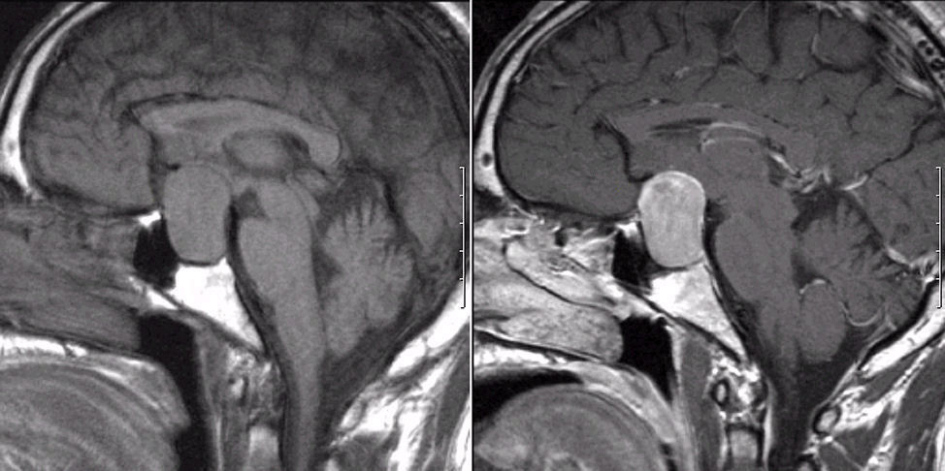
|
A 47 year-old woman developed progressive headaches and difficulty with her vision. Neurological examination revealed a bitemporal hemianopsia. |

![]()
![]()
![]()
| Pituitary Macroadenoma. (Left) T1-weighted
sagittal MRI; (Right) T1-weighted with gadolinium sagittal MRI. Note
the large enhancing mass in the region of the sella that is growing
up into and displacing the optic chiasm and hypothalamus. The chiasm
is draped and thinned over the mass. Surgical
resection demonstrated a large pituitary adenoma. By definition,
pituitary macroadenomas are benign tumors of the pituitary gland
that are greater than 10 mm in diameter. Similar to microadenomas,
macroadenomas may come to medical attention due to signs and
symptoms of endocrine dysfunction from excessive hormonal
production. However, in contrast to microadenomas, macroadenomas may
result in reduced hormone production of some or all of the pituitary
hormones (panhypopituitarism) as the tumor grows and compresses the
normal pituitary tissue. Macroadenomas may also result in focal
neurological signs and symptoms due to mass effect as the tumor
grows outside of the sella and compresses the optic chiasm and
hypothalamus above. Lesions of the optic chiasm classically result
in a bitemporal hemianopsia. |
Revised
11/27/06.
Copyrighted 2006. David C Preston